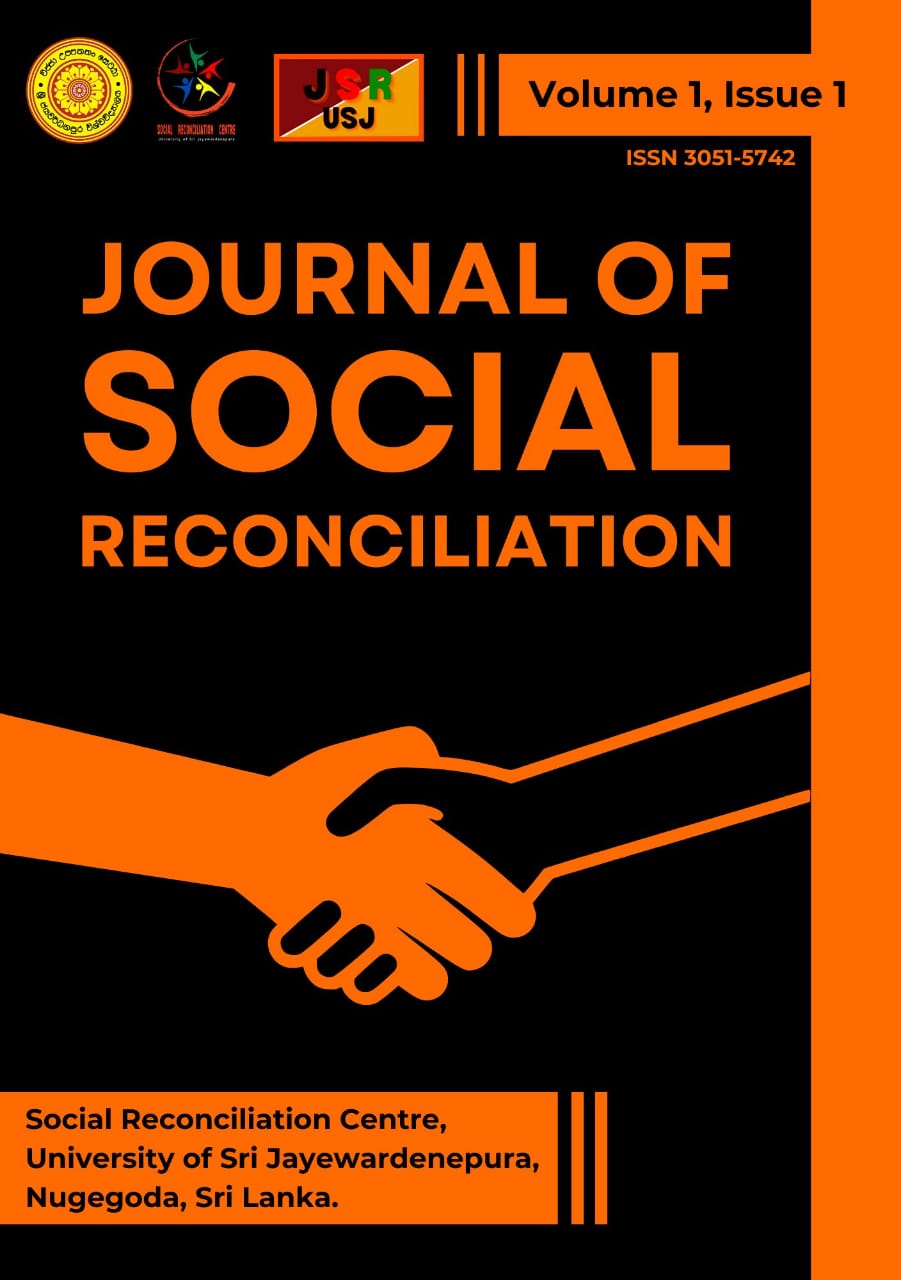THE BEST UTILIZATION OF MUSIC AND LITERATURE FOR NATIONAL RECONCILIATION: A THEATRICAL STUDY BASED ON 'PICCA KEKULU' SONG
DOI:
https://doi.org/10.31357/jsr.v1i01.7537Keywords:
Bloomfield's Framework of Reconciliation, Musical and Literary Content of the Song, National Reconciliation, Picca Kekulu Song, Social Mobility TheoryAbstract
The song 'Picca Kekulu', composed by Sōmathilaka Dissānāyake with music composed by Rōhana Wīrasinghe, is a unique children's song that can be recognized in Sri Lankan music history. Kasturi Sūryakumār and Harshana Dissānāyake are the artists of this song. Accordingly, the primary objective of this study is to identify the facts related to national reconciliation depicted in the musical and literary content of this song. The research problem of this study is, 'How has the audio-visual content of the Piccha Kekulu song been used in depicting national reconciliation?'. For this study, audio-visual media was used as the primary source of data, with books, research papers, e-documents, and internet references as the secondary sources. The theory of Social Mobility and Bloomfield's Framework of Reconciliation were used as the theoretical framework. Accordingly, the aesthetic experience of this song reveals the concepts of long-term and short-term social change discussed in the theory of social mobility. In addition, according to the literary context of this song, the ideas of Horizontal- Downward Mobility related to the tsunami disaster are reflected. The basic experience of the song—the experiences associated with the tsunami disaster—has been used as a cultural bridge to reduce the Sinhala and Tamil cultural distance. The musical experience and creative musical usage of this song are a symbolic representation of national reconciliation. Bloomfield's program of reconciliation includes interpersonal elements such as emotion, acknowledgment, hearing, forging personal bonds, and building understanding, as well as national, social, and political facts such as minimal tolerance and democratic reconciliation are depicted from this song. Accordingly, it can be concluded that the above song is a powerful creation that promotes national reconciliation.



